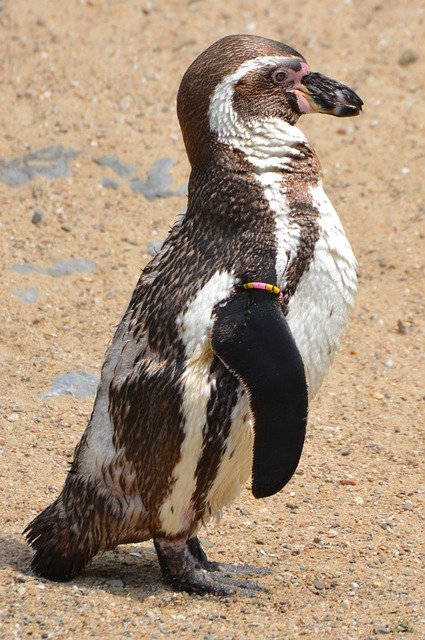**Title: "The Remarkable Adaptations of Penguins: How These Flightless Birds Thrive in Har

The Remarkable Adaptations of Penguins: How These Flightless Birds Thrive in Harsh Environments
Penguins are one of the most fascinating groups of birds, not just because of their distinctive appearance, but also due to their incredible adaptations that allow them to thrive in some of the harshest environments on Earth. While they may have lost the ability to fly, they have gained a unique set of skills that make them exceptional swimmers and survivors in icy waters. In this post, we will explore the remarkable adaptations of penguins that contribute to their survival.
1. Streamlined Bodies
Penguins have evolved a streamlined body shape that reduces drag while swimming. Their torpedo-like form allows them to glide effortlessly through the water, reaching speeds of up to 15 miles per hour. This adaptation not only aids in hunting for food but also helps them evade predators.
2. Insulating Feathers
One of the most critical adaptations for penguins is their feathers. Unlike most birds, penguins have dense, waterproof feathers that provide excellent insulation. Each feather is tightly packed and coated with a special oil produced by a gland near the base of their tail, which keeps them dry and warm in frigid temperatures. This insulation is vital for maintaining their body heat in freezing waters.
3. Unique Blood Circulation
Penguins have a specialized circulatory system that helps them regulate their body temperature. Their blood vessels are arranged in a counter-current heat exchange system, which minimizes heat loss. When penguins dive into icy waters, this adaptation allows them to conserve heat in their core while still being able to cool their extremities.
4. Social Behavior and Communication
Penguins are highly social animals that rely on complex vocalizations and body language to communicate with one another. During breeding season, they engage in elaborate courtship displays and vocal calls to find their mates. Their social structure helps them work together to find food and protect their young from predators.
5. Efficient Foraging Techniques
Penguins are expert foragers, using a combination of diving and swimming techniques to catch their prey. They can dive to impressive depths, with some species reaching over 1,800 feet in search of fish, krill, and squid. Their keen eyesight and ability to see well underwater allow them to locate food effectively.
6. Molting and Feather Replacement
Penguins undergo a molting process where they shed and replace their feathers in a synchronized manner. This adaptation ensures that they have a full set of waterproof feathers during the critical breeding and feeding seasons. The molting process can take several weeks, during which penguins are unable to swim, so they must rely on stored fat reserves.
7. Parental Care
Penguins exhibit remarkable parental care, with both parents often taking turns incubating eggs and feeding their chicks. This cooperative breeding strategy increases the chances of survival for their young in the harsh environments they inhabit.
Conclusion
The adaptations of penguins are a testament to the resilience and ingenuity of nature. From their streamlined bodies and insulating feathers to their social behaviors and efficient foraging techniques, these flightless birds have found a way to thrive in some of the most challenging climates on the planet. As we continue to study and learn from these incredible creatures, it is essential to also focus on conservation efforts to protect their habitats and ensure their survival for generations to come.
Feel free to share your thoughts or questions about penguin adaptations in the comments below! 🐧✨

Upvoted! Thank you for supporting witness @jswit.